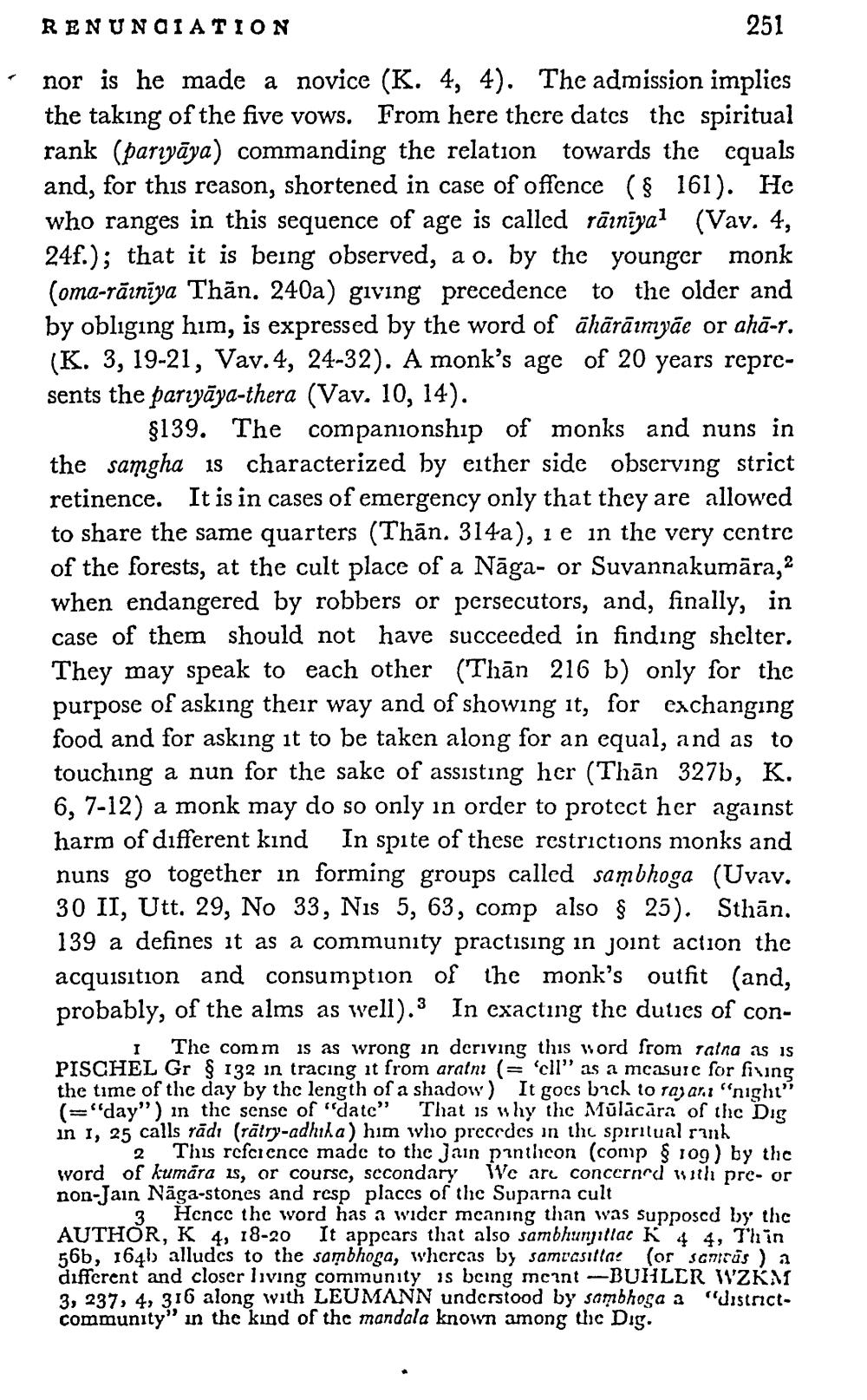________________
RENUNCIATION
251 nor is he made a novice (K. 4, 4). The admission implies the taking of the five vows. From here there dates the spiritual rank (parıyāya) commanding the relation towards the cquals and, for this reason, shortened in case of offence (§ 161). He who ranges in this sequence of age is called räinīyat (Vav. 4, 24f.); that it is being observed, a o. by the younger monk Coma-rāınīya Thãn. 240a) giving precedence to the older and by obliging him, is expressed by the word of āhārāimyāe or ahā-r. (K. 3, 19-21, Vav.4, 24-32). A monk's age of 20 years represents the pariyāya-thera (Vav. 10, 14).
$139. The companionship of monks and nuns in the samgha is characterized by either side observing strict retinence. It is in cases of emergency only that they are allowed to share the same quarters (Thān. 314a), 1 e in the very centre of the forests, at the cult place of a Nāga- or Suvannakumāra,? when endangered by robbers or persecutors, and, finally, in case of them should not have succeeded in finding shelter. They may speak to each other (Thān 216 b) only for the purpose of asking their way and of showing it, for exchanging food and for asking it to be taken along for an equal, and as to touching a nun for the sake of assisting her (Thān 327b, K. 6, 7-12) a monk may do so only in order to protect her against harm of different kind In spite of these restrictions monks and nuns go together in forming groups called sambhoga (Uvay. 30 II, Utt. 29, No 33, Nis 5, 63, comp also § 25). Sthān. 139 a defines it as a community practising in joint action the acquisition and consumption of the monk's outfit (and, probably, of the alms as well). 3 In exacting the duties of con
I The commis as wrong in deriving this word from ratna as is PISCHEL Gr $ 132 in tracing it from aratni (= 'cll" as a mcasure for fivng the time of the day by the length of a shadow) It gocs back to ray an "night" (="day") in the sense of "date" That is why the Mulācāra of the Dig in 1, 25 calls rādı (rātry-adhiha) him who prcccdcs in the spiritual runk
2 This rcfcicnce made to the jain panthicon (comp 10g) by the word of kumāra is, or course, secondary We are concerned with pre- or non-Jain Näga-stones and resp places of the Suparna cult
3 Hence the word has a wider mcaning than was supposcd by the AUTHOR, K 4 , 18-20 It appears that also sambliunillac K 4 4, Thin 56b, 164b alludes to the sambhoga, whcrcas by samrosilla (or sanitās ) a different and closer living community is bcing mount-BUHLER WZK: 3, 237, 4, 316 along with LEUMANN understood by sombhoga a districtcommunity in the kind of the mandala known among thc Dig.




